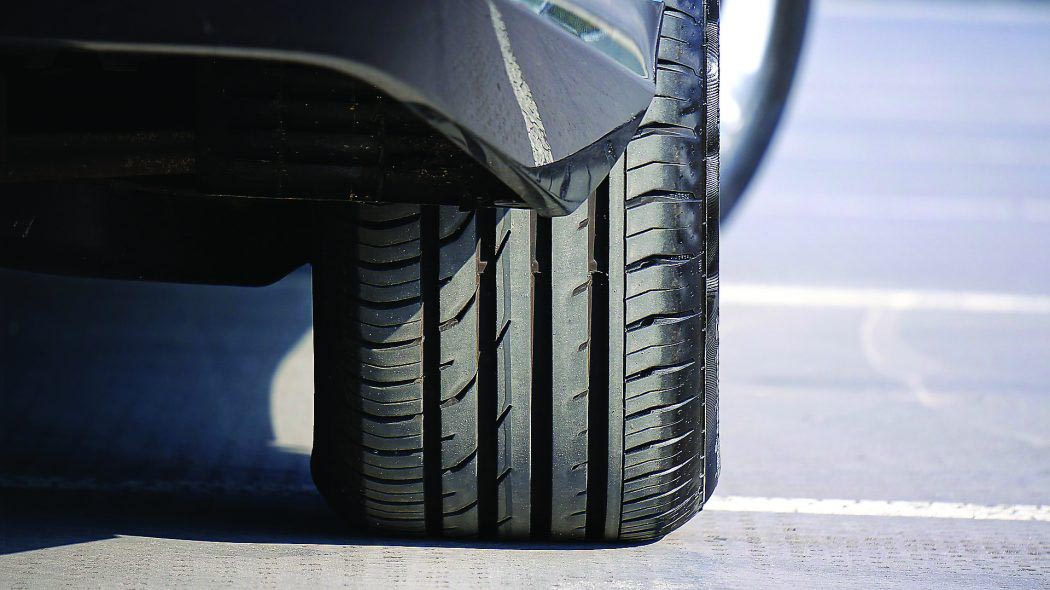Tyres are put under immense pressure daily, twisting and turning, braking, driving at high and low speeds and driving on unparallel surfaces. These are just a few of the things tyres endure as we manoeuvre our vehicles daily. Rotation of tyres is one way to ensure they remain in tip-top shape and maximize their full potential. I promise you it is not rocket science and it is very far from being complicated.
General Manager Nicholas Mckoy of Chad-Ad Distributors, explains that rotation simply means, “moving tyres around from one point to the other. Moving back right to front left and left back to front right,” Stating the importance of rotation Mckoy advises, “tyres should be rotated to give even wear across all four tyres. Front tyres are subject to more abuse than back tyres.They bear the weight of the engine, they turn, scrub against asphalt and driving surfaces and front tyres will hit objects first, like potholes,”. However, not all tyres should be rotated in the same manner so it is important that you know your vehicle and the types of tyres you have affixed.
As a rule of thumb, the front tyres are moved straight to the rear, and the rear tyres are moved to the front, but cross them over (so that the right rear ends up on the left front). The reverse pattern (rear to front, front to rear with a crossover) is also practised. The exact pattern isn’t really that important as long as you’re consistent each time you rotate the tyres. But be sure that every tyre spends some time at each corner of the car.
Some vehicles require different patterns. Unidirectional tyres shouldn’t be crossed over, and older bias ply tyres should also not be crossed. If your vehicle has different size tyres on the front and rear, you should not switch them. In such a case, simply move rights to the left and vice versa. If you have a full-size spare tyre (that is, a real tyre not a small donut spare), you should include the spare in the rotation so all five tyres wear evenly. McKoy highlighted that tyres should be rotated every 8,000 to 10,000 kilometres, notwithstanding the prescribed change time. He also noted that motorists should keep an eye out for signs that would require rotation much faster, for example, “If you are wearing tyres on one axle faster than the other,” He advised that motorists should maintain tyre pressure, check for uneven wear and be mindful of the need for alignment as it causes tyres to wear unevenly.
Don’t ignore your tyres, proper maintenance will keep them in better condition and may guarantee longer life!
To Read More: Purchase your copy of Volume 9 #6 January-February 2018


Share this post:
Tyres are put under immense pressure daily, twisting and turning, braking, driving at high and low speeds and driving on unparallel surfaces. These are just a few of the things tyres endure as we manoeuvre our vehicles daily. Rotation of tyres is one way to ensure they remain in tip-top shape and maximize their full potential. I promise you it is not rocket science and it is very far from being complicated.
General Manager Nicholas Mckoy of Chad-Ad Distributors, explains that rotation simply means, “moving tyres around from one point to the other. Moving back right to front left and left back to front right,” Stating the importance of rotation Mckoy advises, “tyres should be rotated to give even wear across all four tyres. Front tyres are subject to more abuse than back tyres.They bear the weight of the engine, they turn, scrub against asphalt and driving surfaces and front tyres will hit objects first, like potholes,”. However, not all tyres should be rotated in the same manner so it is important that you know your vehicle and the types of tyres you have affixed.
As a rule of thumb, the front tyres are moved straight to the rear, and the rear tyres are moved to the front, but cross them over (so that the right rear ends up on the left front). The reverse pattern (rear to front, front to rear with a crossover) is also practised. The exact pattern isn’t really that important as long as you’re consistent each time you rotate the tyres. But be sure that every tyre spends some time at each corner of the car.
Some vehicles require different patterns. Unidirectional tyres shouldn’t be crossed over, and older bias ply tyres should also not be crossed. If your vehicle has different size tyres on the front and rear, you should not switch them. In such a case, simply move rights to the left and vice versa. If you have a full-size spare tyre (that is, a real tyre not a small donut spare), you should include the spare in the rotation so all five tyres wear evenly. McKoy highlighted that tyres should be rotated every 8,000 to 10,000 kilometres, notwithstanding the prescribed change time. He also noted that motorists should keep an eye out for signs that would require rotation much faster, for example, “If you are wearing tyres on one axle faster than the other,” He advised that motorists should maintain tyre pressure, check for uneven wear and be mindful of the need for alignment as it causes tyres to wear unevenly.
Don’t ignore your tyres, proper maintenance will keep them in better condition and may guarantee longer life!
To Read More: Purchase your copy of Volume 9 #6 January-February 2018
Share this post: